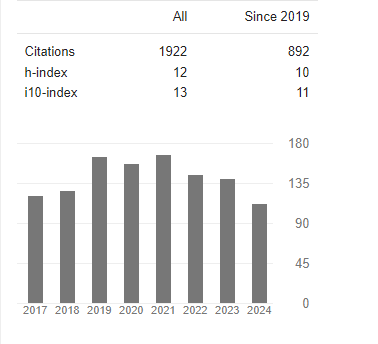Superposition of Acid Concentration and Temperature at Production of Nanocrystalline Cellulose Particles
Abstract
Michael Ioelovich
Relationship between concentration of sulfuric acid (C) and temperature (T) required for the cellulose hydrolysis to prepare nanocrystalline cellulose particles (NCP has been studied in this paper. The experiments showed that there is a linear C and T superposition exists, namely: C= Co – n T. The higher the acid concentration, the lower the hydrolysis temperature should be used, and vice versa. The minimum level of acid concentration that can be used for production of CNP is 40 wt. % at optimal temperature of 80o C. If temperature or acid concentration is lower, there is a tendency to form of microparticles. On the other hand, at higher hydrolysis temperatures, carbonized CNP with decreased yield are obtained. The rod-like crystalline nanoparticles of cellulose produced at optimal hydrolysis conditions (C=40 wt. %, T=80o C) have average sizes of 150 x 15 nm, degree of crystallinity of 75-77% and degree of polymerization of 130-150. The nanoparticles form stable colloidal dispersions in water due to Brownian motion and negativeZeta potential imparting to these particles the mutual electrostatic repulsion. Estimated calculations have also shown that decrease in the concentration of sulfuric acid from 60 to 40 wt. % at production of CNP is economically advantageous despite increase in hydrolysis temperature from 45 to 80o C.



